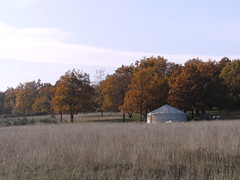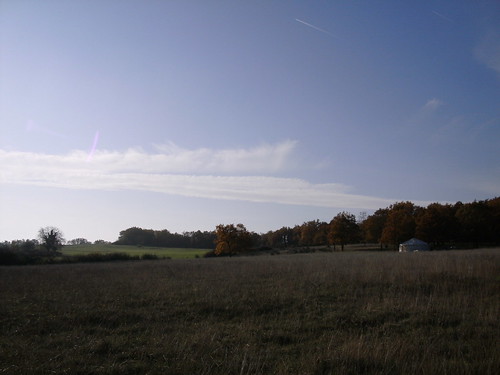last edited 2009/12/24 16:56 (
*)
It has been over a year since I took down my yurt. May 2009 I made contact with a small eco-village like project and visited them in the summer twice on my travelings with my recumbent. I decided to join the project provisional and move with most of my stuff (over 2000kg) to Midi Pyrenees, a trip of 1100km total.
October 23, 2009 I arrived, and things in France go slow, as I'm part of a group project I had to wait until legal issues were resolved to pitch the yurts with the agreement of the local authorities.
Here a quick overview of the multiple steps:
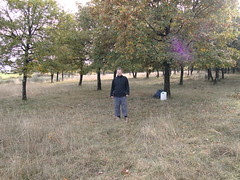
2009/11/04 14:48
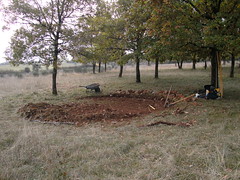
2009/11/11 10:28

2009/11/11 13:39
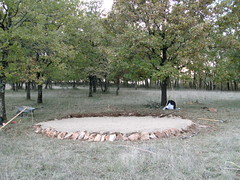
2009/11/12 16:34
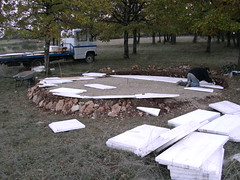
2009/11/13 16:24
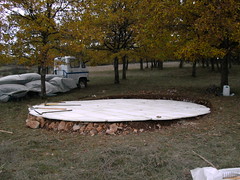
2009/11/15 15:39
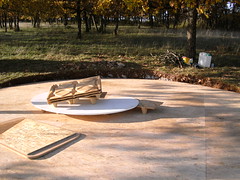
2009/11/16 09:46
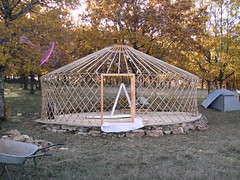
2009/11/16 14:38
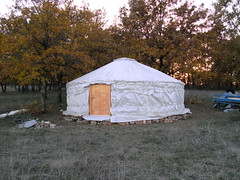
2009/11/16 16:58
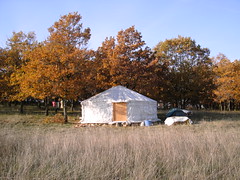
2009/11/18 10:09

2009/11/21 16:59
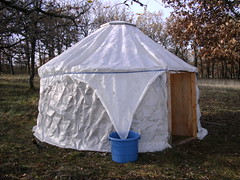
2009/12/10 12:58
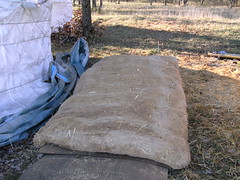
2009/12/11 10:57
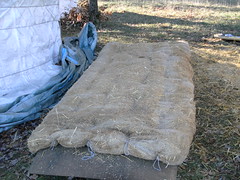
2009/12/11 11:17
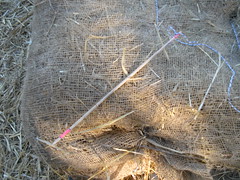
2009/12/11 13:54
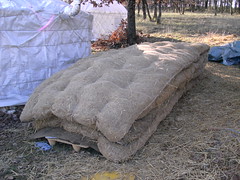
2009/12/12 11:50
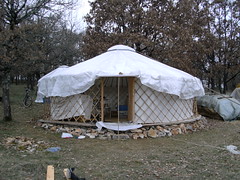
2009/12/13 10:56
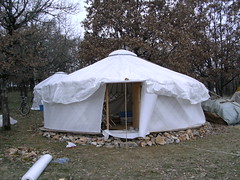
2009/12/13 11:44
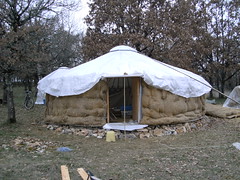
2009/12/13 12:35
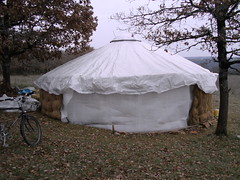
2009/12/13 13:22
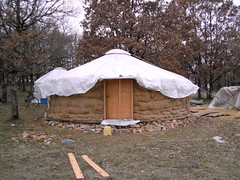
2009/12/13 13:55
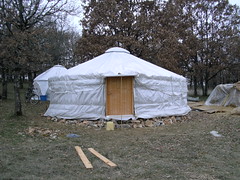
2009/12/13 15:22
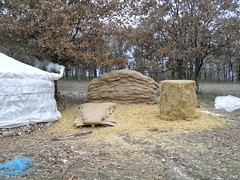
2009/12/16 14:31
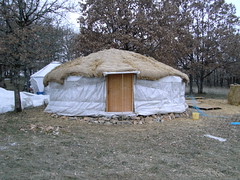
2009/12/16 16:36
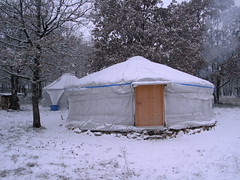
2009/12/18 10:06
The surrounding is very beautiful, yet, very exposed to winds (south, north).
And a surprise, there is a legal way to live in a yurt, and it's rather simple solution.
What does it mean? In Germany, Switzerland and Austria yurts essentially
aren't permitted to be lived in, either you ignore the law and get along
with the local authorities, or make a touristic hotel like setup with yurts,
it might work.
In France you are allowed to pitch a tent, a caravan or a
yurt or some sort of temporary building for at least 2 years after you
have been given permission to build your own house. To get permission to build
your own house is a multistep procedure (e.g. first get a "Certificate of d'Urbanism (CU)) - so, I was given permission to
pitch the yurt before I even filed the details of a house building; but also
that the parcel I'm on will be used for a future yurt camping facility - either way
it seems a legal way to live in a yurt for a "limited time".
With all the feedback from readers of my SimplyDifferently.org  it seems the easiest way to live in a yurt is when a "legal" house is nearby.
it seems the easiest way to live in a yurt is when a "legal" house is nearby.
Back to my place, I arrived to a spot:
- without (direct) access to water, 20min walk to a small water source; solution: rain water collecting and filtering, use water wisely
- without (direct) electricity; solution: solar panels
- without waste water connnection; solution: dry/compost toilette
I have choosen a shady place a slope facing east, open area from North, East and South, and
in the back (West) a small forest, supposed to slow down storms from the atlantic.
In the summer I get shadow around 11:00 until rest of the day, this will
lower the UV impact to the cover I have. Summers are rather hot, 35-38C, and
very dry. No rain for weeks, and rain only briefly.
The eco-village project owns about 55ha of land, about 140 acres - and some is located in a
narrow valley, with at summers is nice to be, at winter only brief sunlight and
rather cold. I have chosen a spot at the plateau, exposed more to the winds, and
in summer time to the heat - that's why the shady spot.
I positioned the yurt between two or three trees, at winter they loose the leafs
and sunlight reaches me until 15:00 or a bit more, in summer, with all the leafs
I have shadow, as mentioned, around 11:00.
Anyway, I will post some of insights and experience living in my yurts here in the future. If you are interested in the technical details of yurt living, check my SimplyDifferently.org  and my yurt diary
and my yurt diary  there.
there.
Links



